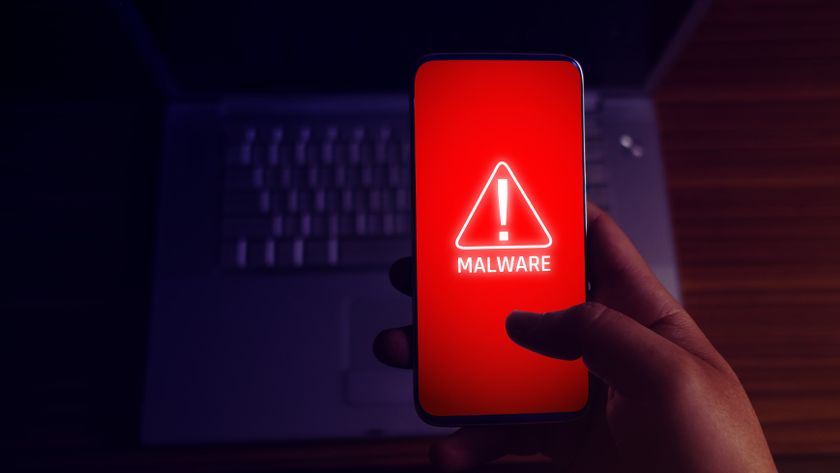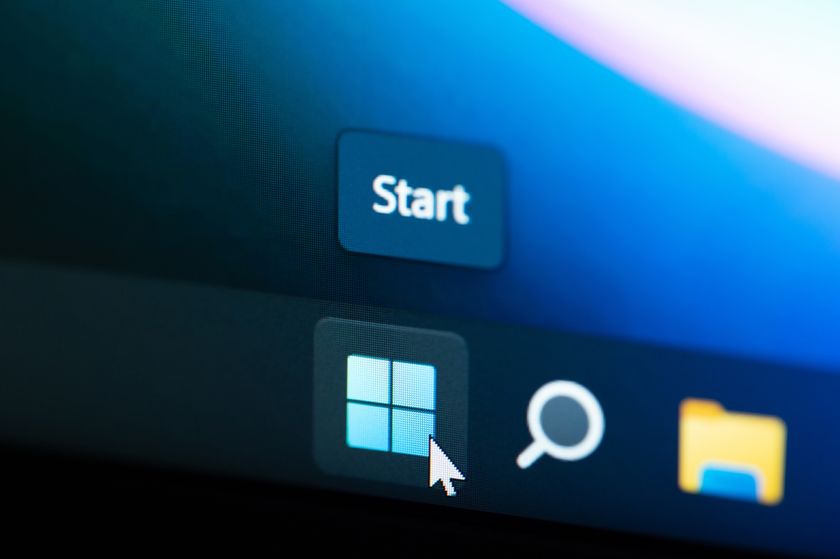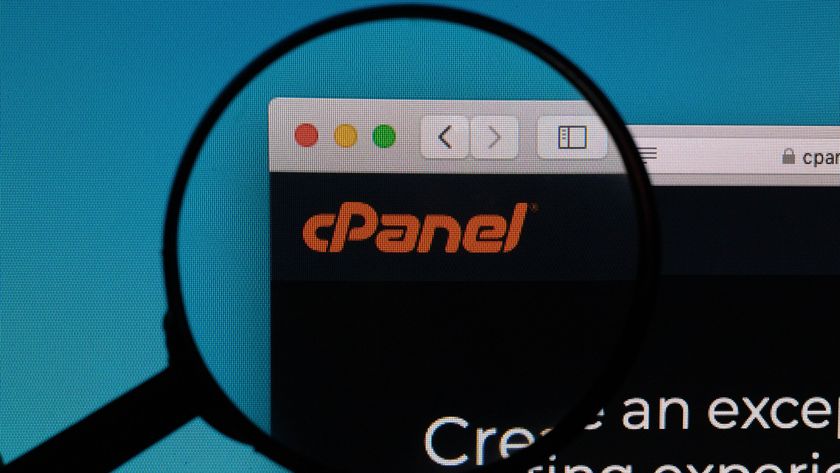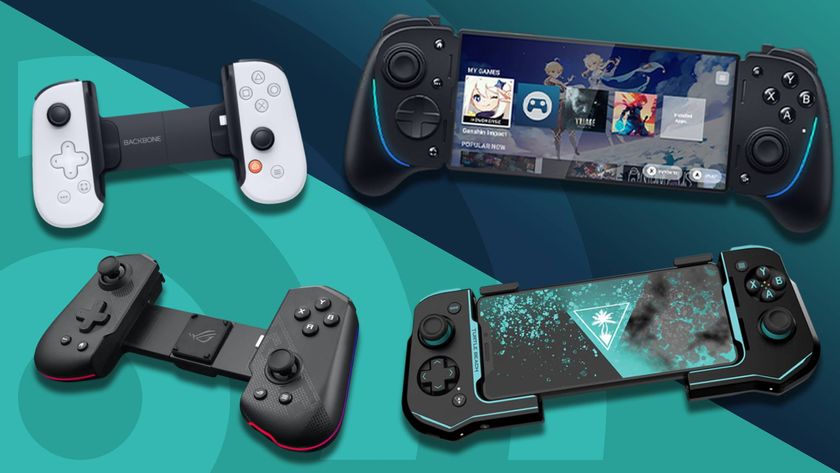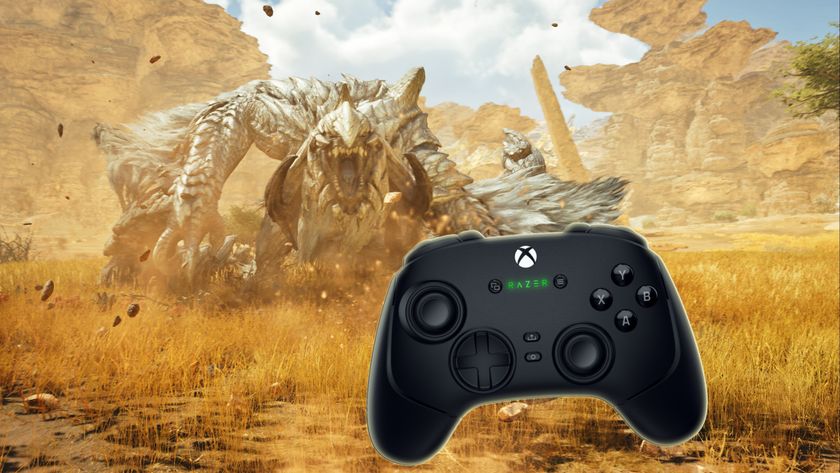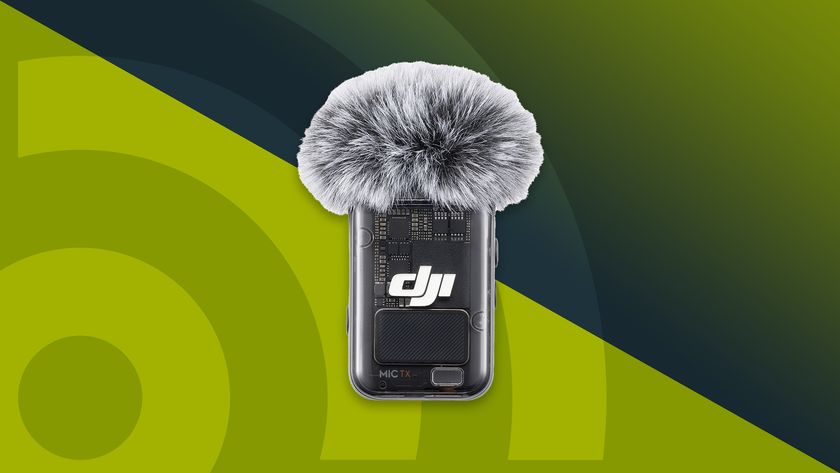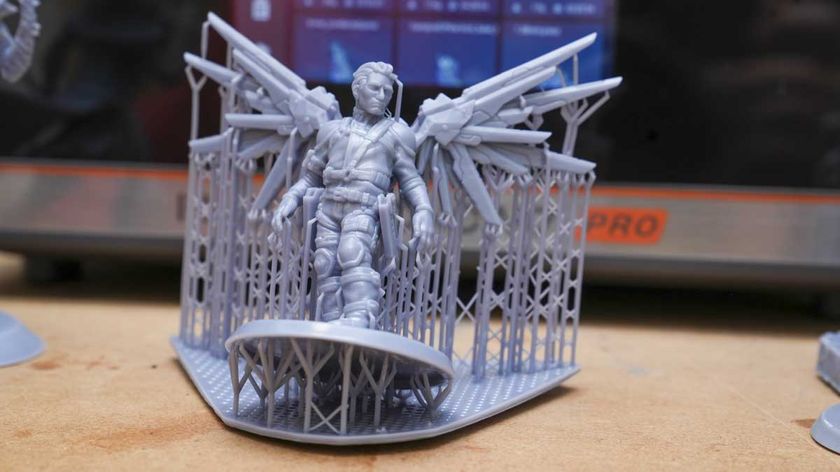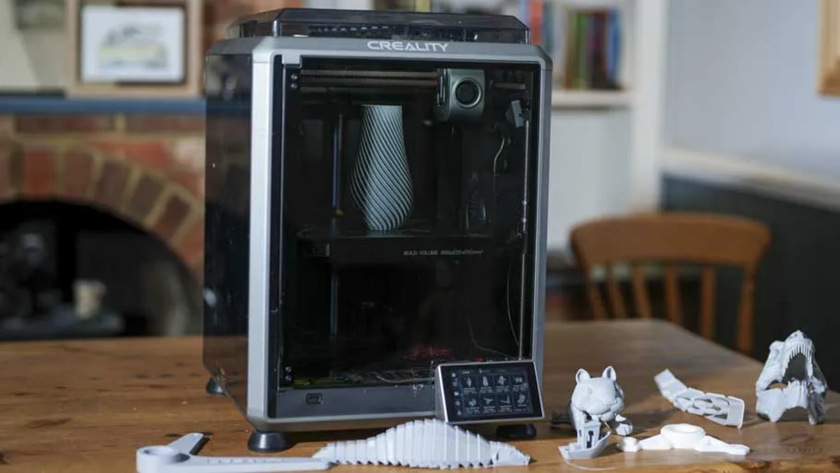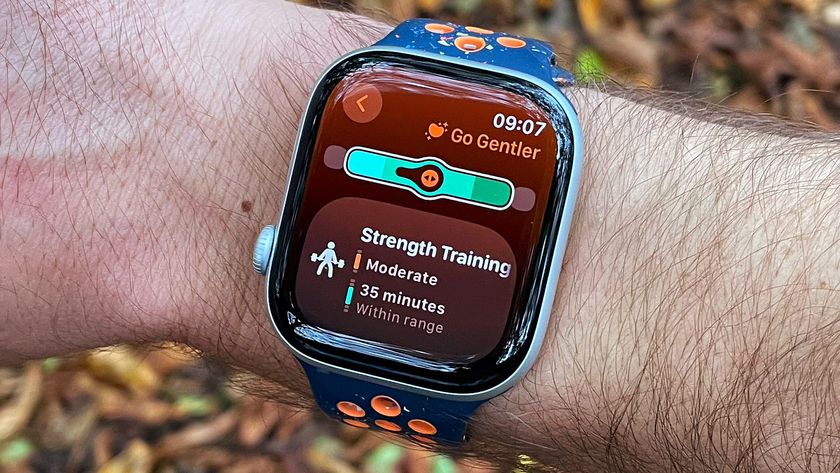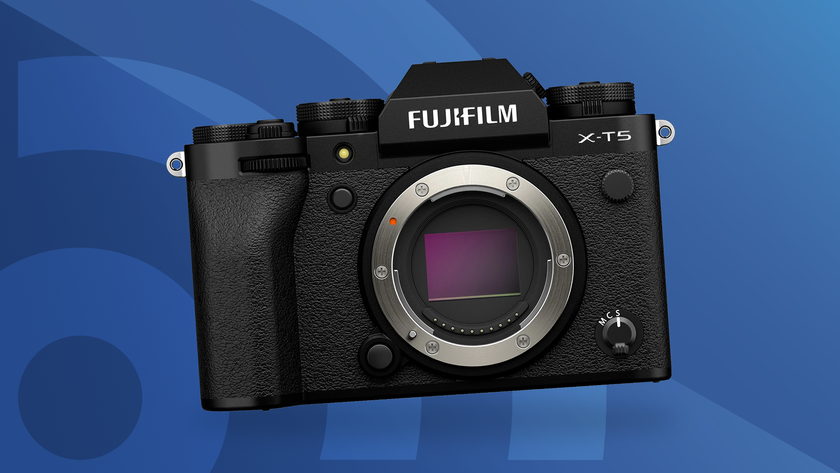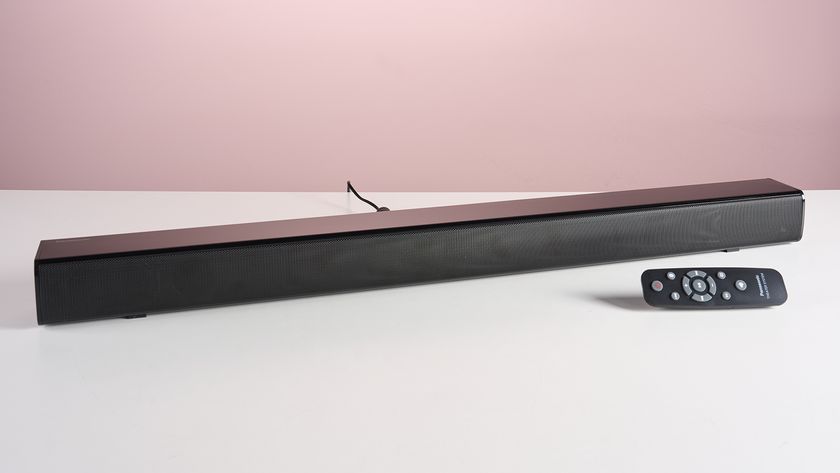Best portable SSD of 2025
We put the best portable SSDs to the test - and these come out tops for transfer speeds and storage capacity
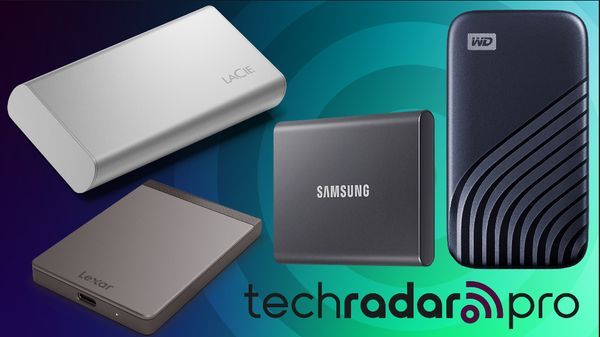
In testing for the best portable SSD, we've tested read/write speeds, connectivity, and overall design to find our top-rated solid-state drives for on-the-go storage.
When my team and I review portable SSDs, we test for speed and much more. The Samsung T7 Touch is the best portable SSD for most people - there's up to 2TB storage capacity here, speedy file transfer speeds, and even a fingerprint scanner for extra security. That's a big bonus in my book.
For more storage solutions, we've also tested the best external hard drives, best external hard drives for Mac, the best USB flash drives, so we know what to look for when assessing the best portable solid-state drives on the market.
Best portable SSD of 2025
Why you can trust TechRadar
Below you'll find full write-ups for each of the best portable ssd candidates on our list. We've tested each one extensively, so you can be sure that our recommendations can be trusted.
Best portable SSD overall



Specifications
Reasons to buy
Reasons to avoid
The Samsung T7 is ideal if you’re looking for the best portable SSD with lots of features. This external storage is not only fast – with sequential read and write speeds of up to 1,050 and 1,000 MB/s, respectively – but it also boasts quite a few great features in the palm-sized package.
The most important of those features is its built-in security options. This uses AES 256-bit encryption and gives you the option to use fingerprint sign-in, which you can set up through the device’s own management software.
On testing the kit, we found this drive offers the perfect balance between security, speed, portability and pricing. While it lacks IP68 and the security certifications of more expensive rivals, the price point makes it an attractive choice. The Samsung T7 SSD could do with a rugged case, but it remains our pick for best portable SSD on the market, and well worth your consideration.
Read our full Samsung T7 Touch SSD review
Best portable SSD on a budget



Specifications
Reasons to buy
Reasons to avoid
I have a confession to make - I may have been a bit too harsh on a review I wrote three years ago. I gave a mere three star to the product I am now writing ecstatically about today.
The Lexar SL200, I wrote back then, was an, "OK product and that’s about it. Compared to almost everything else on the market, it lacks a clear edge and its premium pricing is not helping it at all."
Well, fast forward almost three years and the price of the 2TB version SL200 is now deeply discounted. That alone means I should probably re-review the drive and add at least one star to the review.
At well under $100, it is the one of the cheapest 2TB portable SSD units you can get. That is still far more expensive than a standard portable hard disk drive of similar capacity but let's not forget why an external SSD is a better long run solution for storing your data, files and folders.
✅ Faster It is one of the slowest external SSDs we've ever tested but it is still 3X quicker than most portable hard disk drives.
✅ Works with smartphones A little-advertised feature is that most of the newer portable SSDs have a native Type-C connector that can be plugged into any recent smartphones and be used as storage for your portable device.
✅ Sturdier Because there's no moving parts, the SL200 is a bit more ruggedized than any external consumer hard drives. It should survive a drop on a hard surface from a few feet unscathed.
✅ Smaller The SL200 is smaller than any 2.5-inch hard drive we've seen and by extension, smaller than any portable hard disk drives as well. For once, you can easily slide it in your rear jeans pocket.
✅ 3-year warranty Lexar offers a three-year warranty on its SSD which is 3x what the likes of Seagate and WD offer for portable hard disk drives. Again, that's down to the fact that mechanical parts fail more often than electronics.
Read our full Lexar SL200 review
Best portable SSD for professionals



Specifications
Reasons to buy
Reasons to avoid
Samsung’s brilliant line-up of portable SSDs continues with the excellent Samsung Portable SSD T5. “A masterclass in portable storage” is how we described this speedy drive after our time. If you’re looking for a true portable, this one is proof at last, that an external drive can be smaller than a high-powered power bank or a stack of credit cards.
Building on the brilliant design and performance of its predecessor, the Samsung T3, the T5 does bring performance gains. There’s a fast USB Type-C connection that ekes out every last drop of performance from the solid-state drive inside. It comes with a 10Gbps USB 3.1 Type-C Gen 2, making it capable of delivering twice the maximum theoretical transfer rate of its predecessors. It's also backwards compatible with USB 3.0 and USB 2.0 if your PC doesn't have USB Type-C.
If you’re not fussed about those performance gains, the Samsung T3 should be more than enough, and at a cheaper price now, too. If you already have a T3, you can doubtless stick with it for the time being. Otherwise, the Samsung T5 is a great all-rounder SSD with fast transfer rates for moving or carrying large amounts of data.
Read our full Samsung Portable SSD T5 review
Best lightweight portable SSD



Specifications
Reasons to buy
Reasons to avoid
There’s no prizes for guessing the focus of the Seagate Fast SSD. Yes, that’s it’s name - and yes, it lives up to it.
In our review, we reckoned “when it came to performance, this drive ranked amongst the fastest without resorting to any sort of magic tricks (RAID-0 for example). Seagate’s newest storage product delivered some impressive numbers, almost tying with the G-Drive Slim SSD on CrystalDiskMark and Atto. HD Tune Pro and AS SSD numbers were also amongst the best we’ve seen.”
For a slim, lightweight drive, it’s one of the best portable SSDs - although not as compact as the WD My Passport SSD. Weighing in at 82g, just 9mm thick with a footprint of 94 x 79mm, it will easily slip into your pocket for a comfortable carry.
Best of all, you can usually get it at a good price. You can certainly pay a lot more (or a lot less) for one that doesn’t match the high performance in such a svelte design.
Read our full Seagate Fast SSD 500GB review
Best portable SSD for speed



Specifications
Reasons to buy
Reasons to avoid
The Samsung X5 is the best portable SSD for you if you want faster speeds above all else, and money is (almost) no object.
It comes with a Thunderbolt 3 connection that takes full advantage of the super-fast speeds of the Samsung 970 Evo NVMe SSD that comes inside. Although after testing and reviewing the device, we thought the transfer speeds weren’t as spectacular as you’d expect. But this drive is still exceptionally fast given the right connector.
However, that pure dedication to speed comes at some expense. First, there's the premium pricing. Then there’s the design. Because this drive is no Samsung T3 or Samsung T5. It’s larger and bulkier than either, coming in at 150g - triple the weight of the T5 - with a footprint of 116 x 60 x 18mm.
Not one for those prizing portability, then. However, for speed alone, the Samsung X5 is one of the best money can buy.
Read our full Samsung X5 Portable SSD review
Best portable SSD for students



Specifications
Reasons to buy
Reasons to avoid
With its thin, lightweight design, four different colors, good speeds, and a reasonable price, the WD My Passport SSD is our top pick for students. The device comes in a range of storage capacities up to 4TB, which makes it perfect for storing lots of documents, reports, essays, and media files.
The compact size of this portable SSD is what first caught our eye during our review. At 46g, measuring 10 x 5.5 x 0.9cm, this is an impressively slim-line footprint. We were just as impressed with its sleek, ridged metal design, which improves grip while reducing the chance of causing damage to anything else thanks to its curvy, pebblesque shape.
Inside, you’ll find a SN550E, a PCIe Gen3 x4 NVMe drive that pairs an ASMedia ASM2362 bridge with a SanDisk 20-82-10023 controller and SanDisk BiCS 4 96L 3D TLC flash memory. During our benchmarking with CrystalDiskMark, the drive reached 1046MBps (read) and 1013MBps (write). Other benchmarks delivered the same range of results but transferring a single 10GB file proved to be slower than expected.
Overall, expect a fast, compact portable SSD with an excellent five-year warranty that will last throughout your course. Expect to pay for it for the higher-capacity 4TB model - it’s the drive’s biggest black mark, especially as smaller, nimble rivals are taking the lead when it comes to value for money. Otherwise, there's something for everyone here.
Read our full WD My Passport portable SSD review
Visit our Western Digital coupon page for the latest deals and discounts.
Best portable SSD for freelancers



Specifications
Reasons to buy
Reasons to avoid
The Seagate OneTouch is a flawless portable SSD, offering exactly what you’d expect - and then a bit more.
Built from plastic, metal, and cloth, it’s an elegant design in itself. But at a mere 70 x 50 x 10mm and weighing 43g, this drive is ridiculously small and portable, too. The kit includes both USB Type-C and Type-A cables, although we wished they were longer than they were. The drive is available in 500GB, 1TB, and 2TB capacities, with a black, blue or silver finish.
Performance is excellent. Benchmarking on CrystalDiskMark gave us speeds of 1047MBps (read) and 1027MBps (write). This means we actually managed to beat the rated speed by just over one percent. In other words, this is a speedy drive with plenty to give. In real life, rather than the simulated tests, we transferred a 10GB file in 18 seconds which is equivalent to a transfer rate of more than 500MBps.
The drive uses a USB 3.2 Gen 2 connector, making it one of the fastest external solid state drives in its category, and matching the likes of the Samsung T7 or the Crucial X8. It also comes bundled with a raft of premium software, including a year’s subscription to Create by photo management firm MyLio, and four months of Adobe Creative Cloud.
Read our full Seagate OneTouch review
Best portable SSD for gamers



Specifications
Reasons to buy
Reasons to avoid
A striking RGB design and remarkable performance marks the Adata SE770G out as one of the best portable SSDs with a little something extra.
You may not have heard of them over the likes of Western Digital and Seagate, but the company has a long and excellent record in solid-state storage, including the SD700 and the compact SE730H. Adata is always coy about its hardware because it can change during a production run. But our assumption is, the SE770G uses an SMI controller, like an SM2262G. Depending on the price-point, expect a Samsung, Intel or SK Hynix NAND.
Whatever’s in there, performance is perfectly in line with most USB Gen 2 drives on the market. In our benchmarking, CrystalDiskMark 7.0 recorded 954MBps reads, and 898MBps writes. .
And anyway, it’s the outside that really catches the eye. A mesmerizing lightshow, indicating the drive is powered. It risks coming off as gimmicky, but it’s just subtle, even elegant, enough to work even if it isn't usually your preference. Our only real gripe is, we wished we had more control over the effects. Overall, a great performer. As you'd expect from the RGB design, this is also a portable SSD for gaming, hooking up to consoles like the Xbox Series X/S and PlayStation 5 for storing our ever-growing back logs.
Read our full Adata SE770G external SSD review
Best compact portable SSD



Specifications
Reasons to buy
Reasons to avoid
Small, light, solidly built, the Kingston XS2000 USB 3.2 Gen 2 x 2 external SSD is an impressive portable SSD. And we mean portable. This one’s a pocket-sized drive that can be carried anywhere. measuring 13 x 31 x 67mm without the sleeve, weighing just 29g. Popping the sleeve on might add a little extra, but it adds protection against shocks, water, and dust.
Testing the drive, we found speeds were good. Our benchmarking with CrystalDiskMark: showed read speeds of 1062MBps and write speeds of 999MBps. In fact, the drive is touted as the world's fastest native USB SSD. The key word here is ‘native’, since it uses the USB 3.2 Gen 2 x 2 interface.
Performance, then, is hamstrung in part by Kingston’s baffling decision to release it right before the launch of the speedier USB 4.0. During our review, we noted “it really, really needs a compatible system to hit its headline speed of 2GBps, allowing it to rival Thunderbolt 3.” A misstep for an otherwise excellent portable SSD with 500GB, 1TB, 2TB, and 4TB models available.
Read our full Kingston XS2000 external SSD review
Best portable SSD: Frequently asked questions
What is the best portable SSD for laptops?
All of the portable drives we’ve tested pair well with laptops - especially when you’re looking for portability. The main consideration is your laptop’s connectivity - the most common are USB and USB Type-C. However, if your device supports Thunderbolt 3 PCIe and speed matters to you, then choose a drive with this connectivity. The best portable SSDs with this connection include Samsung X5 Portable SSD. You can read more about the connection in our guide Getting the most out of Thunderbolt 3.
Are portable SSDs good for gaming?
Yes, many of the top portable drives are great for gaming. For example, the Adata SE770G connects to games consoles if you need extra storage while heavily leaning into the gamer aesthetic with its mesmerizing RGB design. However, make sure your SSD has a fast connection speed - preferably Type-C or Thunderbolt. You also want to choose a device with plenty of storage capacity - 1TB and above is a good benchmark, especially when you have a large library packed with newer games, as they take up a lot of space
What is NAND flash?
Anthony Spence, from SSD and memory specialist Silicon Power , answers this question.
"NAND Flash is a type of non-volatile storage technology. Non-volatile simply means that NAND, unlike DRAM (or system memory), does not require power to retain data. The ability to retain data after turning off the power makes NAND a great option for external on-the-go storage devices.
In contrast to hard disk drives (HDD), NAND Flash isn’t a magnetic technology, instead it makes use of electric circuits and a number of memory cells to store data.
NAND holds several advantages over HDD, for instance it has no moving parts, thus in theory data won’t be affected by accidental drops or falls. NAND Flash devices tend to be smaller and lighter in comparison to HDD, but most importantly, the performance of NAND Flash devices is considerably larger than the one from HDD ones.
The major drawback from NAND comes from the fact that they tend to be expensive on a dollar per gigabyte basis, especially when compared to more traditional hard drives. The two most common ways to offset this problem are by either adding bits per cell or by moving away from 2D planar technology to 3D NAND technology and beyond."
What is 3D NAND flash?
3D NAND also known as V-NAND technology enables NAND cells to be layered up. Layering NAND contributes to overcoming planar NAND capacity limitations. As NAND cells are stacked vertically instead of horizontally higher density can be achieved without sacrificing data integrity.
3D NAND not only offers higher memory density when compared to 2D NAND, but also is able to achieve lower power consumption, better endurance, higher read and write speeds and an overall lower cost per gigabyte.
Can an internal SSD be used as a portable SSD drive?
The answer is - unsurprisingly - yes. See an internal SSD is just a bunch of components inside a casing (either plastic or metal), an enclosure that actually protects the electronics inside. Protecting it with an outer case is therefore superfluous unless you want to physically hide the drive for whatever reason or want to make it look more aesthetic.
Just remember that they are no match for the best secure drives or the best rugged drives because they lack extra protection that will either prevent third parties from accessing the actual NAND chips or improve their imperviousness to harsh environments.
SATA SSD drives are the cheapest solid state drives so if you want the cheapest external SSD, you just need to take an internal SATA SSD and connect it to an external connector like the Sabrent EC-SSHD et voila! Even accounting for the cost of the latter (around $12), at the time of writing, you're looking at a saving of almost 20%. Every little helps.
The gap widens significantly the bigger the drive; An 8TB SSD costs about $430 (Samsung 870 QVO at Amazon) while a comparable portable model costs about $200 extra (VectoTech Rapid).
Note that you cannot do it with a PCIe NVMe internal SSD as its components are actually exposed. You will need to put the module into an external enclosure before being able to use it. They are not that expensive (about twice the price of the EC-SSHD) and have the benefit of using USB 3.2 Gen 2, which delivers speeds of up to 10Gbps, enough for the PCIe SSD which are usually faster than SATA SSDs.
Is a portable HDD slower than an external SSD?
Yes. I cannot think of any scenario where it wouldn't be the case and just to confirm, we're talking of portable hard drives (the ones that can be carried around, smaller cousins of desktop or external hard drives). Hard drives are slower because they are mechanical; the data is stored on physical platters and accessed via a head located on an arm; similar to a turntable reading vinyls.
Your average external HDD such as the Seagate Backup Plus has a throughput of 140MBps, that is, it can transfer data up to that speed. The slowest external SSDs we've tested would hit about 450MBps (and that's the SL200), which is about 3X the speed.
So a folder that take about three minutes to be transferred on a portable hard drive will take less than one minute on all but the slowest portable SSD.
How to choose the best portable SSD for you
When choosing which portable SSD is best, the main focus is usually on storage capacity, transfer speeds, size and weight, and durability,
The best portable SSDs offer a range of capacities - they can be anywhere from 50GB (ideal for more casual use or lots of smaller files like Word docs) to 2TB, which is a better choice when throwing images, videos, and other media into the mix. If you’re working to a specific budget, remember the more storage space, the higher the price.
Some SSDs can reach seriously fast speeds, even when transferring or sharing big files. But not all of them have the ability - and a frustratingly slow drive has a big impact on workflows. We’ve benchmarked all the best portable SSD options during our reviews, letting you compare simulated and real-life transfer speeds to the manufacturer's claims. A Thunderbolt 3 PCIe interface offers the fastest connectivity over USB, but the connection isn’t supported by every PC and laptop, so check before committing especially if you’ll be hooking it up to lots of different devices.
Portable drives come in all shapes and sizes - all of them compact. Slimline and lightweight designs are key for anyone tired of lugging around standard external drives. Some are so small, you can slip them in your pocket like a mobile phone. If you’re worried about damaging your drive while on the move, many offer shock-resistance (and unlike HDDs, there are no moving parts to break). But for truly rugged portable SSDs, make sure it’s IP68-rated. This means it’s dust- and water-proof.
How we test the best portable SSDs
We've tested a massive range of HDDs and solid-state drives, including the fastest SSDs and the fastest external SSDs.
When testing, reviewing, and rating the best portable SSD devices, we benchmark performance in a simulated environment and record real-world results when actually transferring files between devices and drives. This lets you see how well the manufacturer claims match real-world performance. As part of this benchmarking, we also looked at connectivity and interface, with options ranging from USB Type-C to the speedy Thunderbolt 3.
Storage capacity is a key area when comparing the best portable SSD. Ideally, we want to see a broad range for a broad user-base. Several models are now capable of storing up to 2TB of data, but not everyone requires this much space, and opting for a model with less capacity may be one way to save some money.
Lastly, we've considered design. The best portable SSDs need a size and weight that are bag- or pocket-friendly. At minimum, they should exhibit shock-resistance, but those marketed as rugged or robust devices should also be dust- and water-proof.
Are you a pro? Subscribe to our newsletter
Sign up to the TechRadar Pro newsletter to get all the top news, opinion, features and guidance your business needs to succeed!
Former TechRadar Pro B2B Hardware Editor, Collin has been in journalism for years, with experience in small and large markets, including Gearadical, DailyBeast, FutureNet, and more.
- Steve ClarkB2B Editor - Creative & Hardware
- John LoefflerComponents Editor
